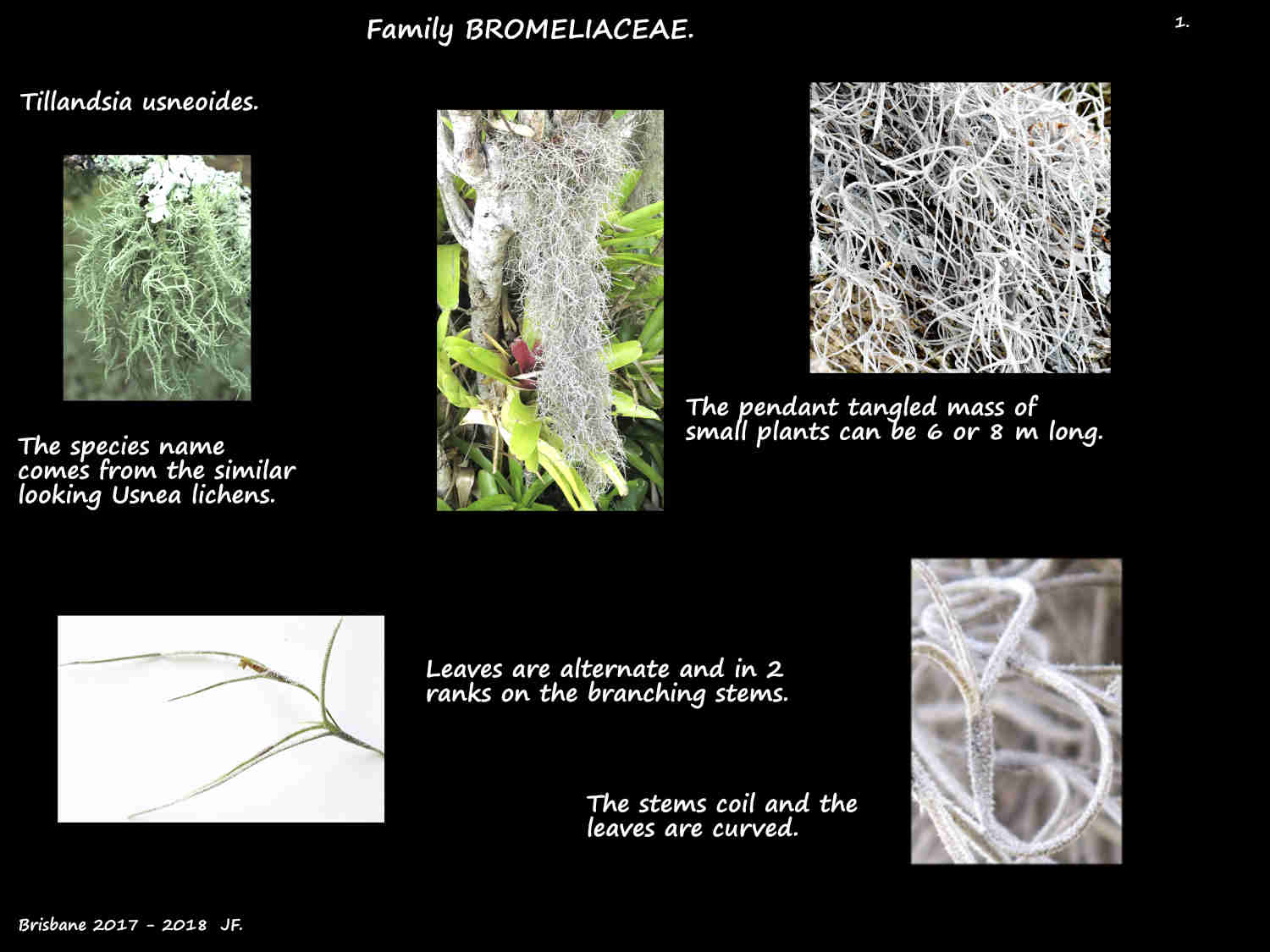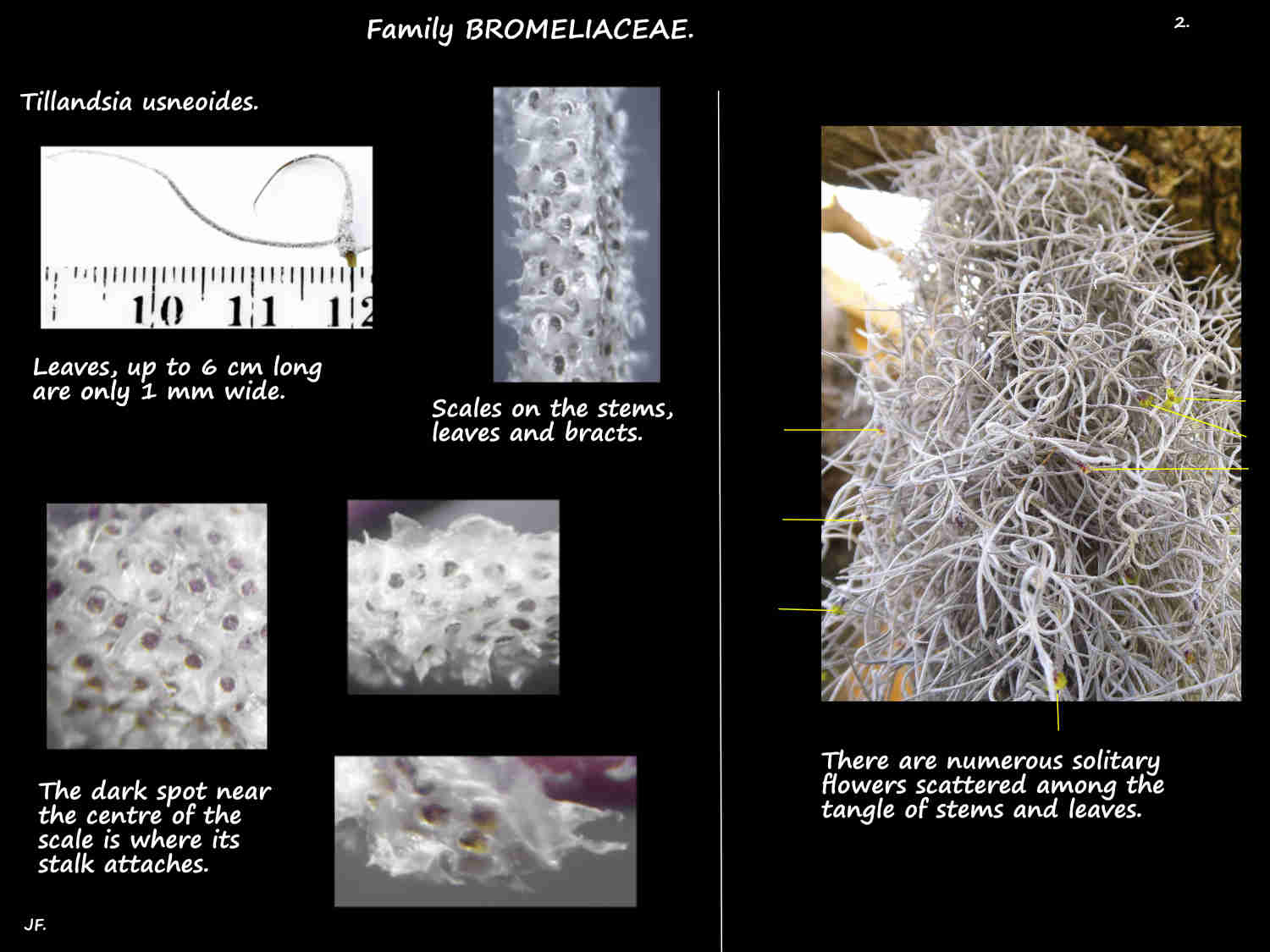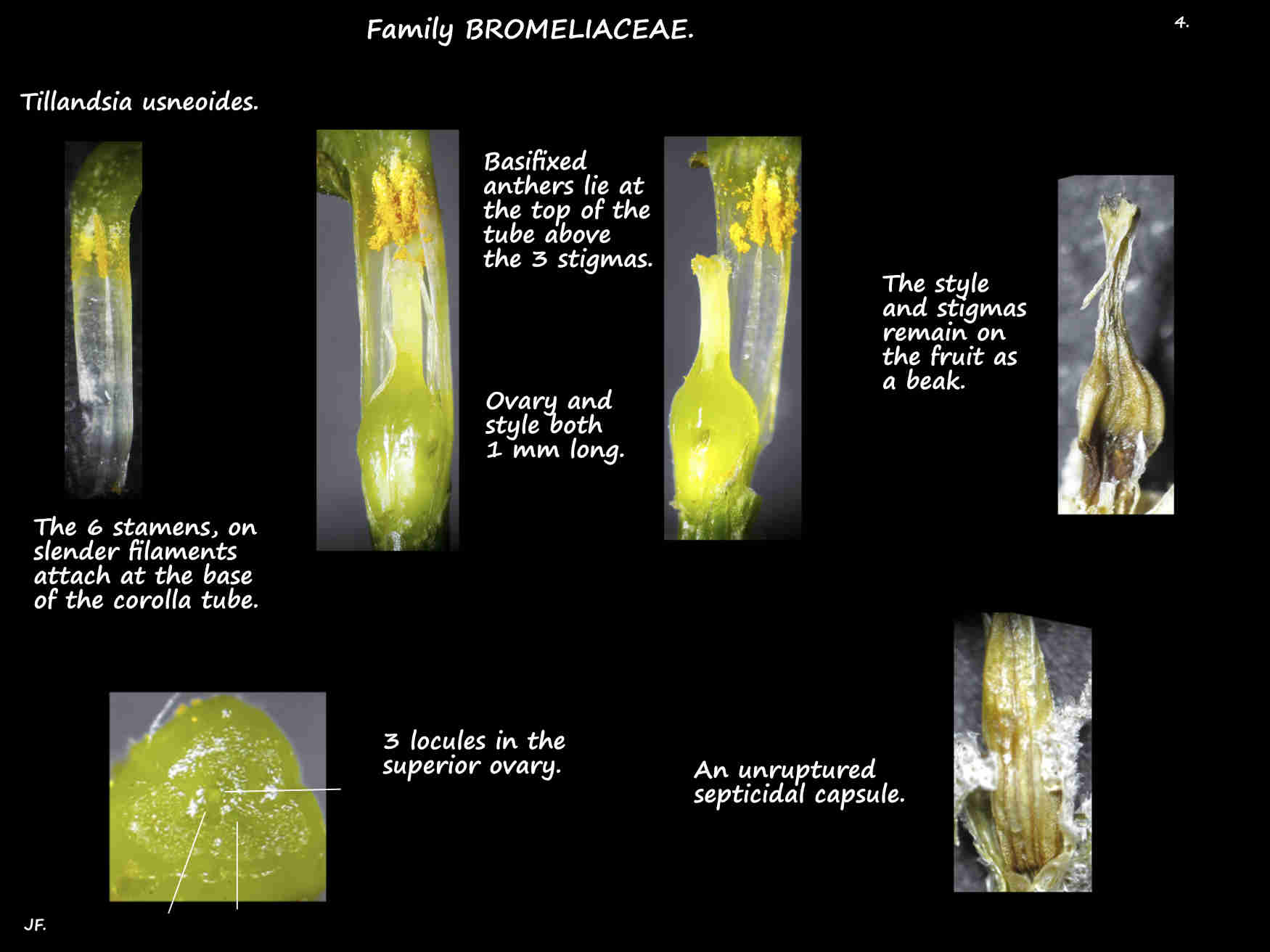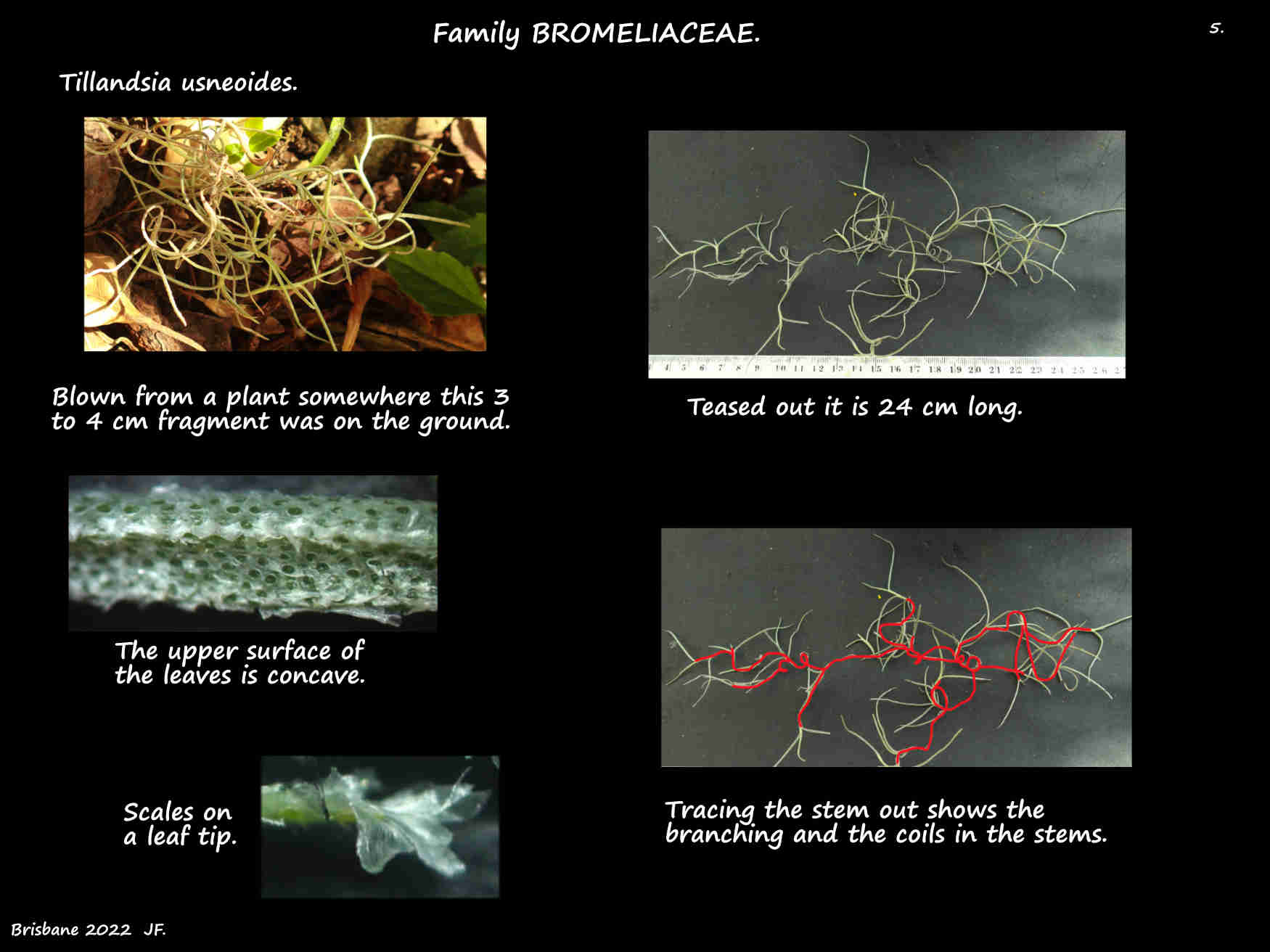Tillandsia usneoides.
Spanish moss is occasionally seen in Brisbane gardens.
They are epiphytes mainly seen hanging from trees.
A fragment from a plant lands on a branch and attaches using small roots which are soon lost.
As the thin stem grows it branches at each node.
Each branch then branches eventually leading to a tangled mass of stems and leaves up to 7 or 8 m long.
Coils along the stem and the curved leaves help hold it all together.
The alternate curved and spreading leaves are in 2 ranks.
Up to 5 or 6 cm long they are thread-like being less than 1 mm wide.
Leaves have no teeth or spines but are covered in a thick layer of trichomes or scales.
The scales are on a short stalk that is attached near the centre of the scale.
The point of attachment is a green or brown dot on the whitish translucent scale.
The stems and leaves are grey due to the dense layer of scales.
The scales absorb water and nutrients from the surroundings.
Inflorescences are a single terminal flower or occasionally two.
Flowers are on a very short stalk or pedicel with one or 2 small bracts partly covered in scales.
The tubular, bisexual flowers are around 1 cm long.
The 3 free pointed sepals are around 6 mm long.
The bases of the 3 greenish-yellow petals form a corolla tube around 7 mm long.
The 3 to 4 mm long lobes, with a roundish tip curve or curl backwards.
The anthers of the 6 stamens lie just inside the corolla tube.
The basi-fixed anthers open through longitudinal slits.
The superior ovary and the single style are both around 1 mm long.
There are numerous ovules in each of the 3 locules of the ovary.
There are 3 stigmas.
The fruit are cylindrical brown septicidal capsules 2 to 2.5 cm long.
They have a short beak formed by the style and stigmas.
The pale brown seeds are almost hidden by long white hairs attached at one end.
The hairs aid wind dispersal of the seeds.
Plants also reproduce by fragments breaking off.
J.F.






